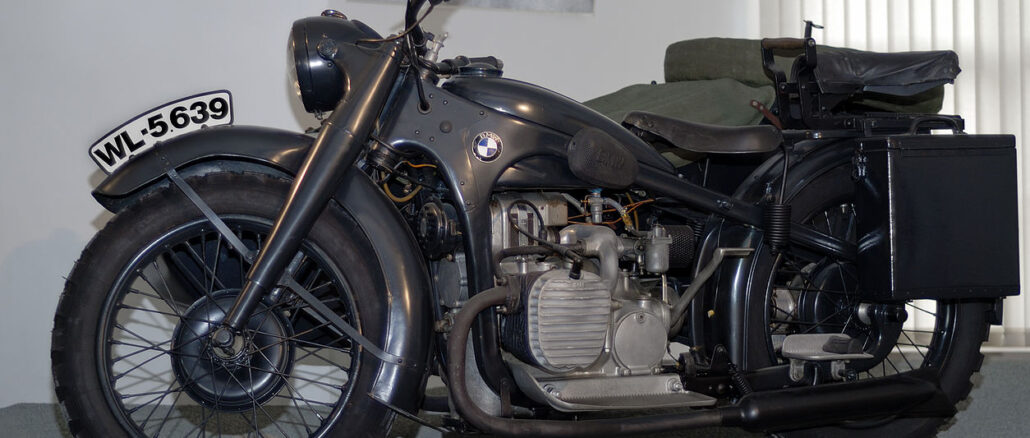
The BMW R12 is a pre-World War II motorcycle that was produced by the German car manufacturing company BMW. The motorbike was first presented and developed in 1935.
On 14 February 1935, BMW presented the R12 together with the BMW R17 on the German Automobile Exhibition in Berlin for the first time, being a direct successor to the BMW R11. This and the R17 were the first in the world being produced with hydraulically damped telescopic forks.

During the war, such fast vehicles proved ever-critical to the speed required in Hitler’s blitzkriegs of European countries. When the German army needed motorcycles, BMW was chosen to supply them. BMW would deliver 36,000 R12s to the ranks of the German Army by May of 1941, making the R12 BMWs most-produced motorcycle up to that point. Despite her reach, the type was eventually replaced in German Army service by the military-minded R75 series from 1942 onwards. Along the BMW production lines, the R12 itself replaced the R4 of 1932 – the R4 being nothing more than civilian motorcycles purchased for military use.
The K75 was a Zündapp R75 BMW, a larger model for use with a sidecar. The R12 was for lighter duty use and primarily carried soldiers to and from a point of action.

The German Army R12 was fitted with a BMW 2-cylinder, 4-stroke engine of 745cc, delivering 18 to 20 horsepower at 3,400 to 4,000rpm. Despite the weak output, the engine delivered the needed power to haul the motorcycle frame and its optional unpowered sidecar as required. She measured in at 2.10 meters, held a width of 0.90 meters (sans sidecar) and stood at 0.94 meters. Her weight was listed at 413lbs. Maximum road speed was listed at 62mph while range was out to 158 miles with its 14 liter internal fuel capacity. A passenger could be carried over the rear wheel fender on an optional seat positioned directly behind and slightly above the driver. Otherwise this position could be reserved for carrying supplies on a simple optional rack system. Saddlebags could be hitched to the sides of the rear fender. A rounded headlamp illuminated the area ahead for dawn/dusk operations. Characteristic of the brand was its wheel mud covers, straight horizontal handle bars, multi-spoke wheels and its broad, flat sprung driver’s seat.
When in service with the Wehrmacht, the R12 was called upon to relay messages from point to point while also utilized as a fast reconnaissance element. She proved a solid, speedy and relatively reliable battlefield instrument. However, heavy mud and snow were quick to wreak havoc on the critical working components of the motorcycle, forcing the German Army to continue its search for a dedicated replacement system. The addition of a sidecar increased ridership to three persons (the typical operating number for German motorized sidecar elements during the war) and could offer light battlefield support by mounting either a MG34 or MG42 series 7.92mm general purpose machine gun on a special mount along the sidecar front facing. Motorcycles formed specialized motorized infantry regiments for the Wehrmacht and provided a critical punch in the early phases of the blitzkrieg where speed and coordinated overwhelming force was essential to any victory. The R12 series, therefore, went on to see service with the German Army along ever major front to that point in the war – from fighting in the deserts of Africa to the frigid cold of the East Front.
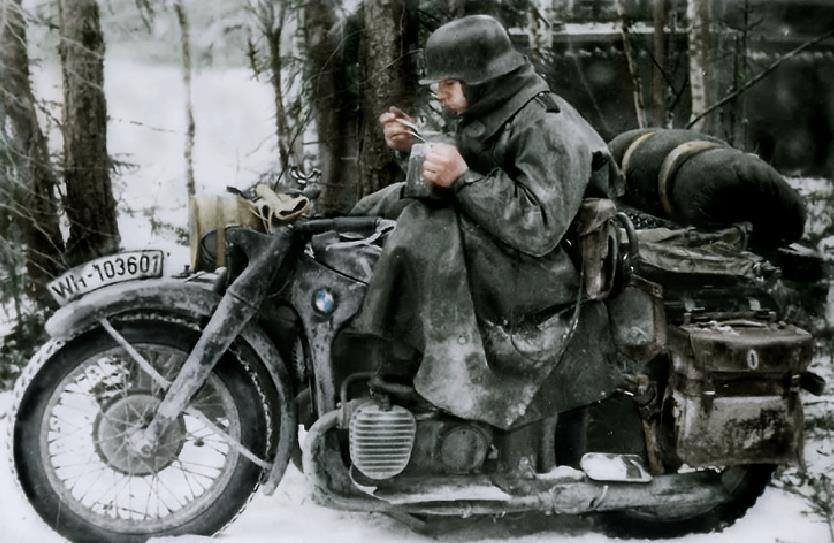
Today a BMW R12 is in the Museum of Military History in Vienna, in its original camouflage.
Length: 2,10 m
Width: 0,90 m
Height: 0,94 m
Weight: 188 kg
Maximum speed: 100 km/h
Operational range: 255 km
Fuel consumption: 3.5-4L (every 100 km)
Engine: two-cylinder boxer 745cm³ – 18 hp at 3400 rev/min (20 hp at 4000 rev/min in the version with two carburetors)
Transmission: manual

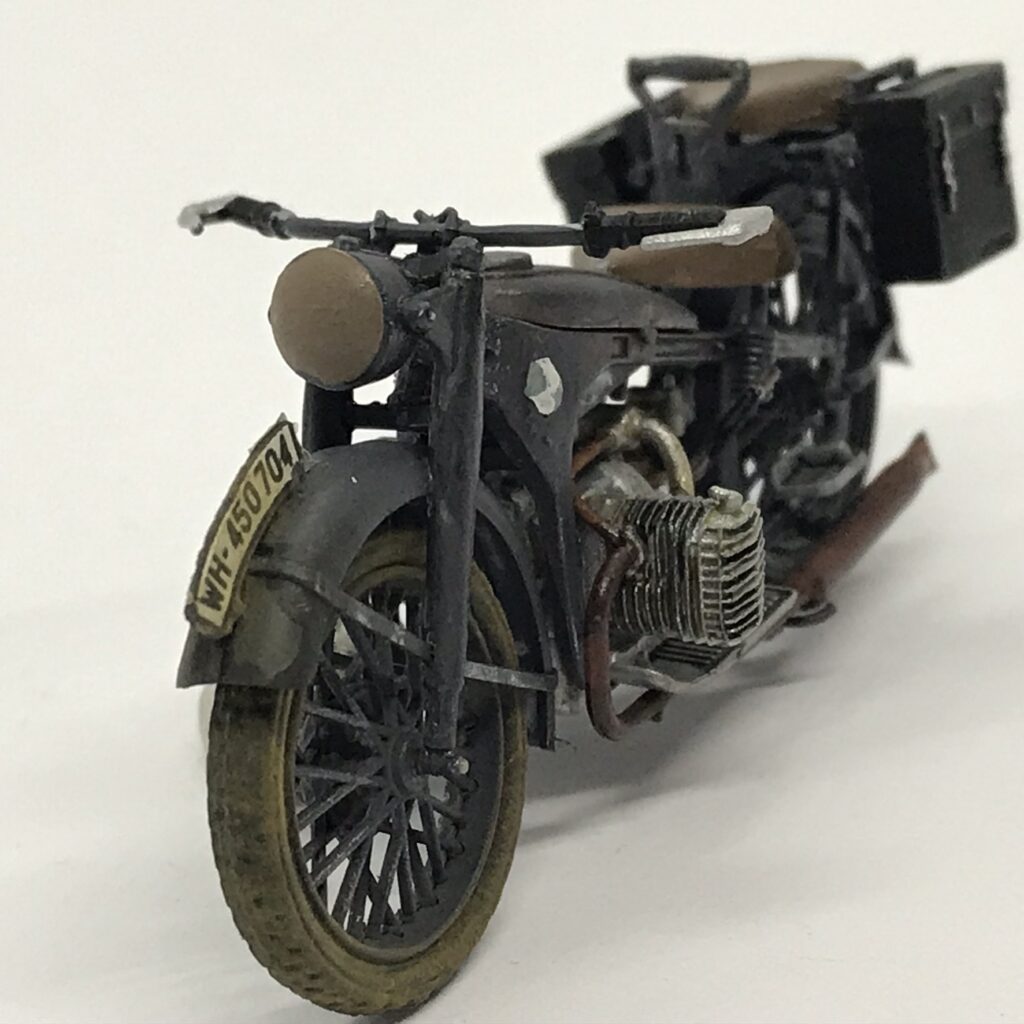

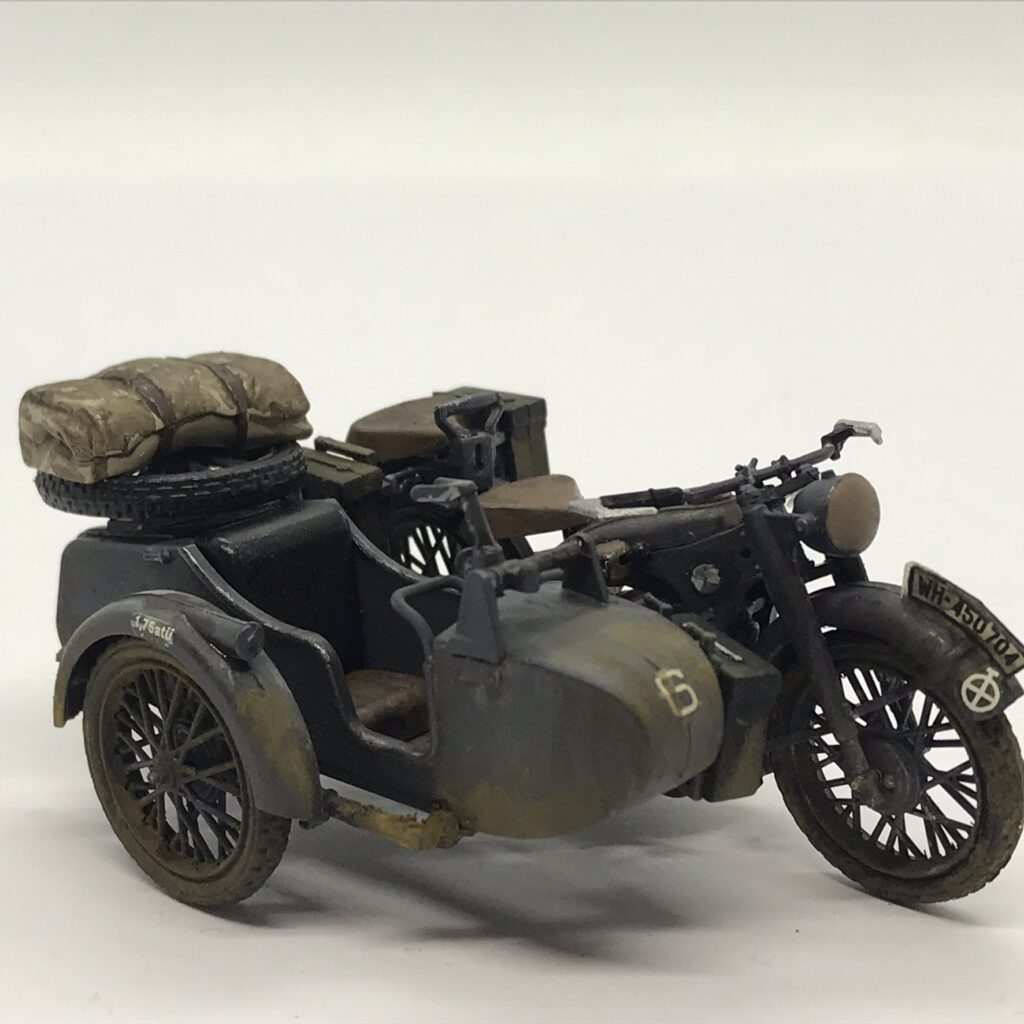

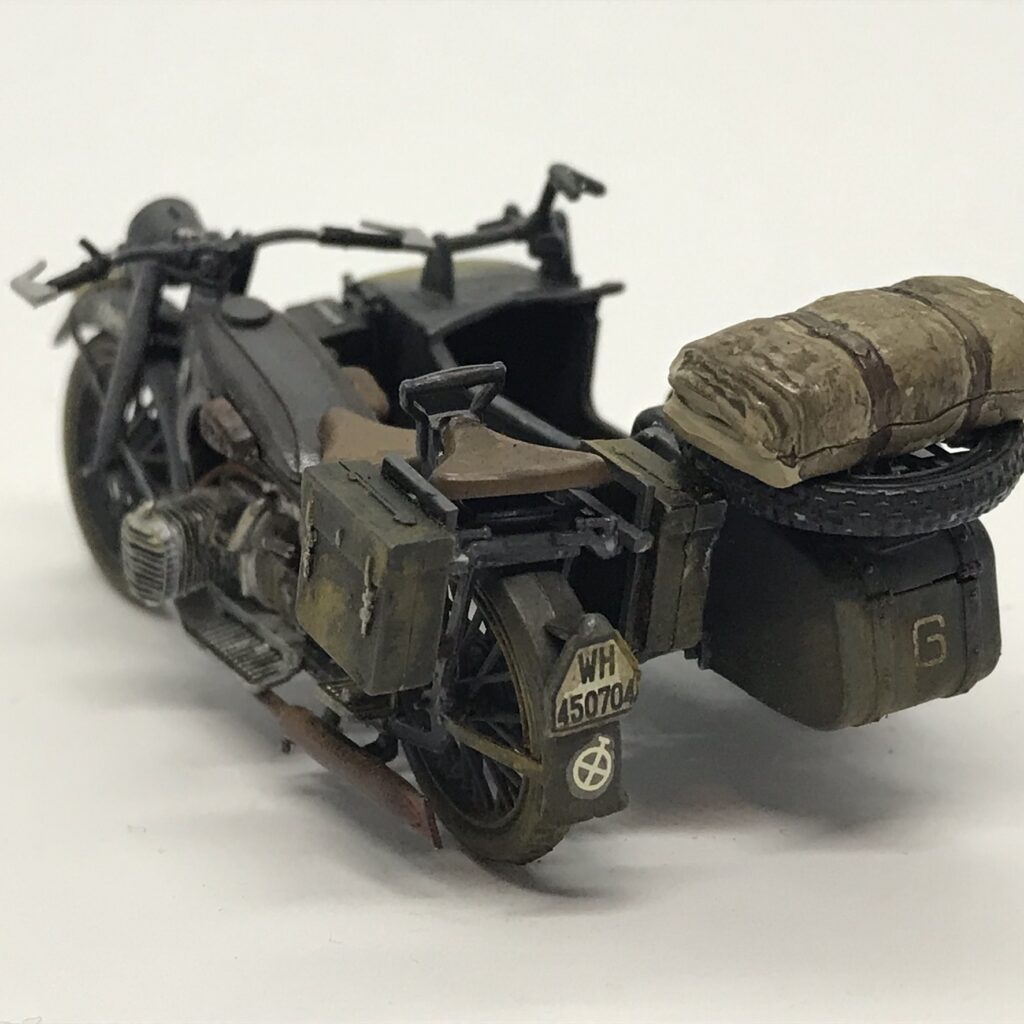

Be the first to comment